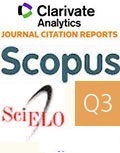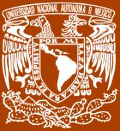Identificación de zonas potenciales de recarga de agua subterránea en el acuífero Siguatepeque, Honduras, mediante evaluación multicriterio
Identification of potential recharge zones of groundwater in the Siguatepeque aquifer, Honduras, by means of multicriteria evaluation
Nelson Geovanny Mejía Pineda1,*, Mario Murillo Álvarez2
1 Universidad Nacional de Ciencias Forestales (UNACIFOR), Escuela de Ambiente y Desarrollo, Colonia Las Américas, Siguatepeque, Honduras, C.P. 12111.
2 GeoTec, Barrio Arriba, Siguatepeque, Honduras, C.P. 12111.
Autor para correspondencia: (N.G. Mejía Pineda) This email address is being protected from spambots. You need JavaScript enabled to view it.
Cómo citar este artículo:
Mejía Pineda, N.G., Murillo Álvarez, M., 2025, Identificación de zonas potenciales de recarga de agua subterránea en el acuífero Siguatepeque, Honduras, mediante evaluación multicriterio: Boletín de la Sociedad Geológica Mexicana, 77(1), A260624. http://dx.doi.org/10.18268/BSGM2025v77n1a260624
Manuscrito recibido: 26 de Abril, 2024; Manuscrito corregido: 12 de Junio, 2024; Manuscrito aceptado: 26 de Junio, 2024
ABSTRACT
To manage groundwater effectively, it is necessary to have information about the hydrogeological environment that can guide the decision-making process. The identification of potential recharge zones is a crucial task, especially in cities like Siguatepeque where groundwater is currently the most important source of water supply for the population. In the present study, the potential groundwater recharge zones (PGWRZ) of the Siguatepeque aquifer are determined through a multicriteria analysis based on the Analytical Hierarchical Process (AHP). In addition, remote sensing techniques and Geographic Information Systems (GIS) were used. Six criteria were established: geology, lineament density, slope, drainage density, soil type, and land use. Through an AHP, weights were assigned to each criterion, and different classes were defined according to their relative influence on the recharge potential. The study revealed that 28% of the total area has a good recharge potential, 40% medium and 32% low. Field validation shows that 83% of the monitored perennial wells were found in areas identified with a good recharge potential. Validation of low recharge potential zones was not possible due to the lack of observation wells in these areas. Finally, a special zoning of areas with a high recharge potential is presented to facilitate interpretation and decision-making regarding the design and implementation of strategies for the conservation of groundwater and the sustainable management of the Siguatepeque aquifer.
Keywords: potential recharge zones, Analytical Hierarchical Process, hydrogeology, developing countries, Geographic Information Systems.

